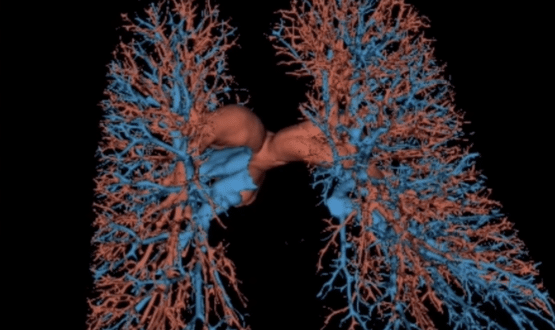PICS of the crop
- 2 April 2015

University Hospitals Birmingham NHS Foundation Trust is a big organisation. It employs some 5,000 staff, sees 1,000 patients daily, and issues 32,000 new prescriptions resulting in 137,000 medicine administrations each week.
At the end of the 1990s, it was struggling to process all this data; and turned to IT to cope. “We needed to help staff in real time and provide accurate information for analysis to ensure continuous improvement and clinical excellence,” says executive medical director, Dr David Rosser.
In 1999, renal clinicians developed a prescribing information and communication system (PICS). The trust’s IT team set about adding an e-prescribing and medicines administration application to more safely prescribe, administer and review other patients.
Since then, it has gone on to add many features. “PICS has been continuously developed over the past 15 years with input from senior clinicians across our organisation,” Rosser says.
“Originally designed to provide prescribing checks for drug interactions, contra-indications, dose limits and allergies, it has gradually evolved into a full clinical system that’s revolutionised the quality and safety of patient care at University Hospitals Birmingham.”
Dashboard indicators
The system that has been developed resembles a car dashboard displayed on a computer screen in each ward. Dials monitor performance on measures such as infection levels following surgery and falls by frail patients.
The system also records the timing of drug doses, plus the diagnosis and treatment of bedsores – a potential indicator of neglect.
A dial registering green shows that performance is improving. A drop in performance – benchmarked against comparable wards and recent returns – earns a red or amber rating.
These indicators – and the response of ward staff – show up on senior managers' dashboards too, enabling them to look into lapses promptly. The system also resolves mistakes resulting from staff misinterpreting handwriting, a common cause of incorrect dosages.
Clinicians access the system through handheld tablets when ordering and administering prescriptions, laboratory requests, imaging results and internal referrals. In this way, the system works as a point of care decision support tool backed by constant real-time information.
Decision support
Every decision made by clinicians working in wards is run through an ‘error filter’ that screens the decision made – such as changing a patient’s therapy, ordering tests or discharging.
This records the decision and either confirms the order, warns the clinician of a potential error, requires them to re-enter their password to acknowledge responsibility for the order, or stops the order.
Rosser says the automatic alerts and rules within PICS have made a huge difference to the patient experience. “It has improved patient safety, not only by reducing missed doses and inappropriate prescribing, but also by reducing the number of mortalities each year.”
He says observational data from PICS shows that measurable indicators of quality of care – namely markers of the precision of medicines administration and documentation – can be linked to a 17% reduction in the mortality rate at University Hospitals Birmingham in comparison to standardised mortality ratios throughout England.
There have also been considerable reductions in the rates of missed and uncharted doses of medication at the hospital, according to Rosser. “We’ve dramatically reduced the number of doses of drugs that are not administered, resulting in a significant improvement in emergency survival.
“Whilst it’s always difficult to directly compare paper-based audits with electronic ones, our best estimates suggest we’ve prevented around two-thirds of medicines management errors since implementing the system,” he adds.
Performance indicators
“We’re also using data and indicators from the system – mainly around prescribing – to monitor the performance of junior doctors,” he says. “This allows us to identify doctors who are either very high-performing or performing relatively poorly.
“High performers are then interviewed by senior consultants to establish what they are doing to enable them to perform at that level, so we can cascade the information to their peers. In the case of those who are performing poorly, any issues are discussed in a genuinely supportive environment.
“As a result, we’ve seen very clear improvements in the performance of junior doctors. This suggests there’s regular discussion among them about what we’re focusing on and subsequent dissemination of good practice between them – without us needing to intervene.”
As well as reducing readmissions and wasted prescriptions, Rosser says PICS enables medical teams to assess the effectiveness of treatments much more quickly. For instance, coronary patients taking beta-blockers fare much better in heart operations if a dose is given shortly before surgery.
“Overall, we’ve experienced marked improvements in patient safety, efficiency and cost effectiveness on the wards,” he says. “And with the continued analysis of data for research and service improvement purposes, PICS has set the bar for patient care at a very high level.”
More than e-prescribing
Rosser believes the trust’s system now delivers much more than stand-alone prescribing systems which, he contends, can contain minimal decision support and offer too few benefits for the investment made in them.
“What started out as purely an e-prescribing system now takes in vital signs monitoring and other assessments, while feeding clinical dashboards and decision support mechanisms. In short, PICS is a decision support tool that helps clinicians make the right decisions.”
For instance, he says it automatically prompts a nurse to think twice about administering a medication if there is a recent blood result suggesting this might lead to harm. It will recommend blood tests for the following day if results from the previous day were unexpectedly abnormal.
PICS also sends automatic alerts to the urgent response team if a patient’s heart rate, blood pressure or temperature exceeds certain alert thresholds. If it receives no acknowledgement, it will keep chasing them.
Due to go live in A&E shortly, PICS currently operates in all the trust’s inpatient, outpatient and day case areas, and is used across 17 specialties. “It’s not just an e-prescribing system, more an electronic patient record in itself,” says Rosser.
“PICS takes the integration between clinical systems and information to a new level by handling many of the daily tasks trusts undertake – like risk assessment for venous thrombo-embolism (VTE) now mandatory in the NHS – which are now integrated into the core system and part of the hospital’s routine work.
“Furthermore, it brings together ordering, results, medicines administration, discharge letters, clinic letters, referral management, handover, patient list management and electronic patient observation system – all underpinned by a robust rules-based engine.”
Now available more widely
As a measure of its effectiveness in improving patient care, PICS carried off an EHI Award in 2014 for ‘best use of IT to promote patient safety’. Its success has also been registered by the healthcare establishment.
A Journal of the Royal Society of Medicine report noted that University Hospitals Birmingham’s mortality rates had fallen and that the system helps reduce errors which can lead to poor patient care.
Rosser adds that PICS is now available to other NHS trusts under an exclusive reseller agreement with Servelec Healthcare.
Moreover, he says that NHS England is impressed by the system and is working with the trust with a view to offering a stripped down version of the core functionality – PICS-Lite – to provide medicines management and a reporting suite.
This comprises modules to support admissions/discharge, clinical decisions, prescribing and medicines administration, nursing assessments, business intelligence dashboards on a licence-free basis to other trusts keen to benefit from the adoption of e-prescribing.
Rosser says PICS-Lite functionality provides a solid foundation to make a positive impact on patient care and clinical safety. Indeed, Birmingham Children’s Hospital has already partnered with UHB to create its own paediatric EPR using tech fund money.
Birmingham Children’s claims the system will enable more decision support for clinical staff than any other system, as well providing safety alerts, hospital wide real-time patient-level drug data and up to 80% reduction in drug errors. It aims to pilot and implement the system by 2016.
Entries are now open for the EHI Awards 2015. For details, visit their dedicated website.




